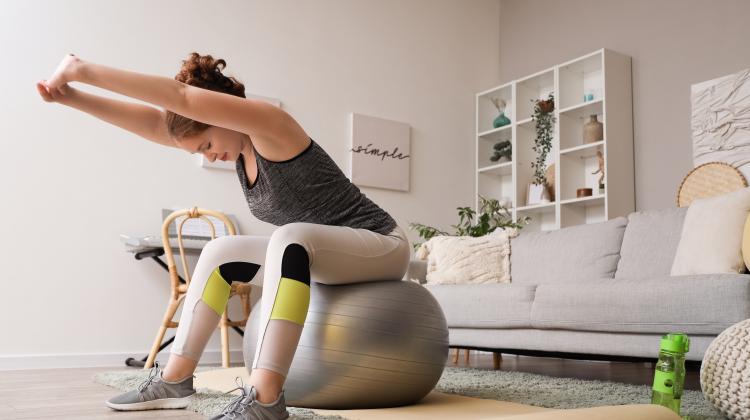We prefer clear parks and mysterious forts, new study finds
 Ruins of Fort Osowiec (Podlasie) 22.07.2015, located in the marshes - in the narrow Biebrza valley near the settlement of Osowiec-Fort in the Goniadz commune, Mońki district. (jo/abug) PAP/Jerzy Ochoński
Ruins of Fort Osowiec (Podlasie) 22.07.2015, located in the marshes - in the narrow Biebrza valley near the settlement of Osowiec-Fort in the Goniadz commune, Mońki district. (jo/abug) PAP/Jerzy Ochoński
Wild-looking parks are perceived as less safe than parks with visible human intervention, say Polish scientists who studied the impact of green spaces on visitor preferences. For respondents, dense vegetation is acceptable in forts, as it adds mystery to the objects.
The results of the studies 'How the amount of greenery in city parks impacts visitor preferences in the context of naturalness, legibility and perceived danger' and 'How vegetation impacts preference, mystery and danger in fortifications and parks in urban areas' were published in the journal Landscape and Urban Planning.
The research was conducted by Professor Aleksandra Lis from the Landscape Architecture Department at the Wrocław University of Environmental and Life Sciences, together with Dr. Łukasz Pardela, a team of scientists and students from the University of Environmental and Life Sciences (Karolina Zalewska, Ewa Adamczak, Alicja Cenarska, Klaudia Bławicka, Barbara Brzegowa, Anastasiia Matiiuk), and Paweł Iwankowski, a psychologist and statistical analysis expert from Gdańsk.
In the study on the amount of greenery in urban parks, 127 participants evaluated 120 landscape photographs of parks, selected from a set of a thousand photos taken in Wrocław parks.
“The photographs were taken late spring or summer, in full vegetation, on sunny days, between 10 AM and 3 PM, without scenes with particularly attractive elements (such as ponds), and without scenes showing neglect,” says the release on the Wrocław University of Environmental and Life Sciences website.
All these criteria were selected to minimize the impact of other factors. In the survey, respondents of different ages and genders answered questions about their sense of security, clarity, naturalness, and preferences.
The second study included the cultural aspect, namely fortifications, of which there were approximately 4,817 of different sizes, types, and origins in Poland according to 1997 data.
In the study that aimed to show the relationships between mystery, danger and preference, 83 participants (61 women and 22 men) viewed randomly selected photos from a larger pool: 60 photographs of 19th and 20th century fortified landscapes in Chełmno, Grudziądz, Nysa, Poznań, Toruń, and Wrocław, and 60 photographs of parks in Wrocław. The photos were taken in spring or summer, on sunny days, without frames showing signs of degradation, anti-social behaviour, or exceptional decorative elements.
The results show that when it comes to parks, people's perception is more influenced by a sense of danger - they prefer clarity in parks. The opposite is true for fortifications, where mystery wins - we like dense vegetation that adds mystery to these objects, even though it makes them seem dangerous.
The university said: “Our research has shown that mysterious landscapes are often less visible, so seem less safe. Therefore, mysteriousness is desirable for tourism, but only where a sense of danger is not present.”
It added: “Mystery is a very important element in the attractiveness of a landscape
“Mysterious landscapes prompt us to go further, to satisfy our natural curiosity, to pursue new information, and this is, after all, what tourism is all about.
“However, mystery also has a downside: it is associated with a reduced sense of security - when we don't know what's around the bend, on the one hand we are curious, which prompts us to explore - but on the other hand we may be afraid of potential danger, which keeps us from that exploration.”
There is not much research on preferences towards historical sites, and little is known about the preferences of those who visit fortifications. Usually, their significance has been considered from a cultural point of view, with the surrounding greenery treated as a destroyer that damages historic structures.
The university said: “However, when we treat them, like parks, as places of recreation, then a new area for research opens up.
“The conservationist schools of preservation assumed that such sites should be exposed as best as possible to show the former structures. The greenery that appears on them over time should be removed so that it does not obliterate these structures and dislodge the walls. Meanwhile, our research shows that people like the greenery on the fortifications because it makes them seem more mysterious.”
The authors of the study added: “They don't show all the elements, they leave room for imagination, for exploration. This prompts us to revise our old views and consider directions for revaluation in which the forts are not so much a dead historical monument as an attractive place for exploration and recreation. Instead of emphasising the conflict of interests, it is better to look for compromises: to respect both the arguments of conservationists and nature; architecture and greenery can coexist.”
The authors admit that the results of both studies are not surprising. The research hypotheses posed at the beginning have been confirmed: parks with natural vegetation are unpopular when they are not very transparent and seem unsafe. However, the naturalness of a park is not a source of anxiety if it has a clear layout.
The results can be used to plan sustainable urban green spaces and provide guidance for landscape designers; they indicate how the physical characteristics of urban parks affect the visitors' perceptions of them. Professor Aleksandra Lis cautions, however, that there is no simple 'recipe' for parks and that a distinction must be made between what is the goal for science and what is the goal for the designers.
Professor Lis said: “Science should in no way judge reality or answer questions about what we should do. The purpose of science is to understand and predict. Our answers can only help those responsible for shaping spaces.”
She added that “studies on feelings of safety in parks overwhelmingly show that dense greenery reduces feelings of safety. The conclusion often drawn from these studies is that parks should be shaped as open spaces, using trees, preferably with a high-set canopy, and without mid-growth vegetation, i.e. shrubs that create view obscurations. However, while such spaces are undoubtedly safer, it does not necessarily mean that they are better. People are looking for different values in parks, not just safety.
“Such values include, for example, the mysteriousness and naturalness explored by us in both articles, giving a sense of fuller contact with nature.”
In her next project, Professor Lis will investigate the impact of park lighting on the sense of danger, mystery and visibility of spaces. She will conduct part of the experiment in the Botanical Garden in Wrocław.
PAP - Science in Poland
amk/ zan/ kap/
tr. RL
Przed dodaniem komentarza prosimy o zapoznanie z Regulaminem forum serwisu Nauka w Polsce.


















